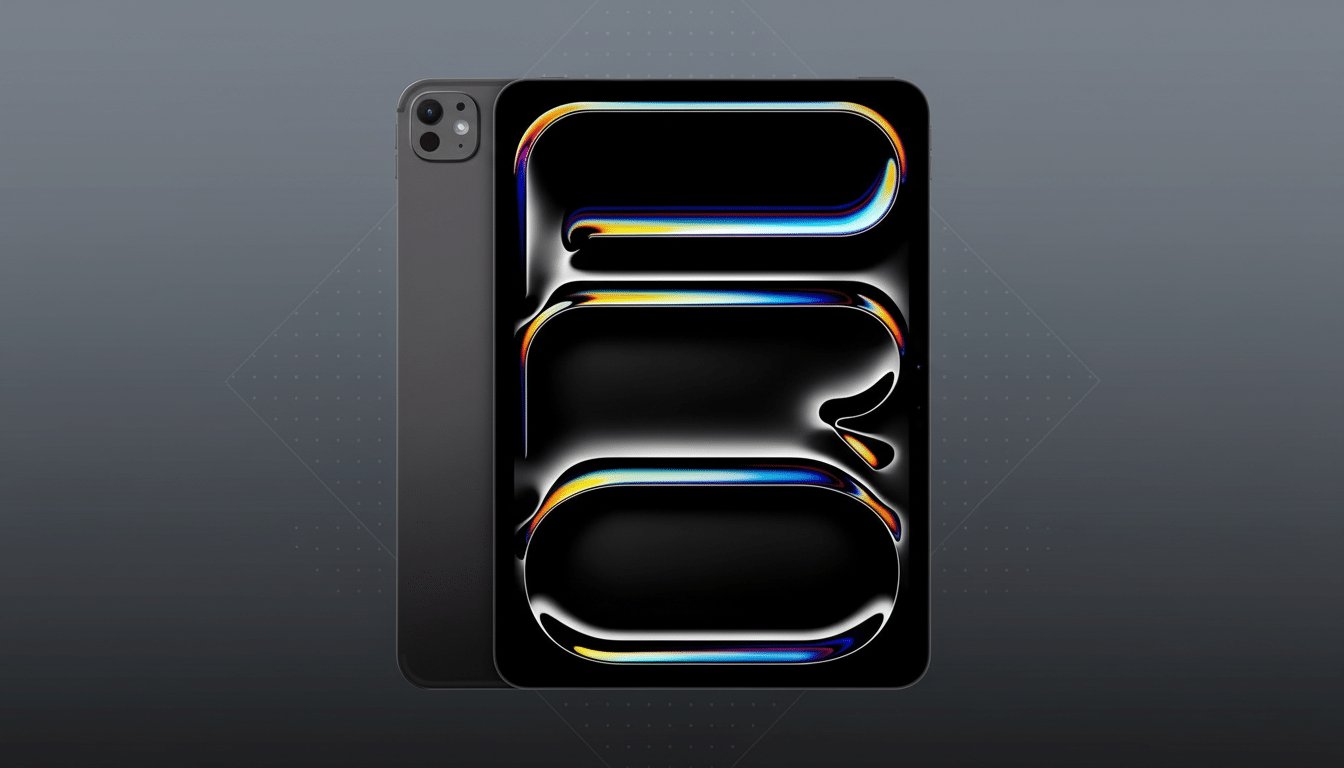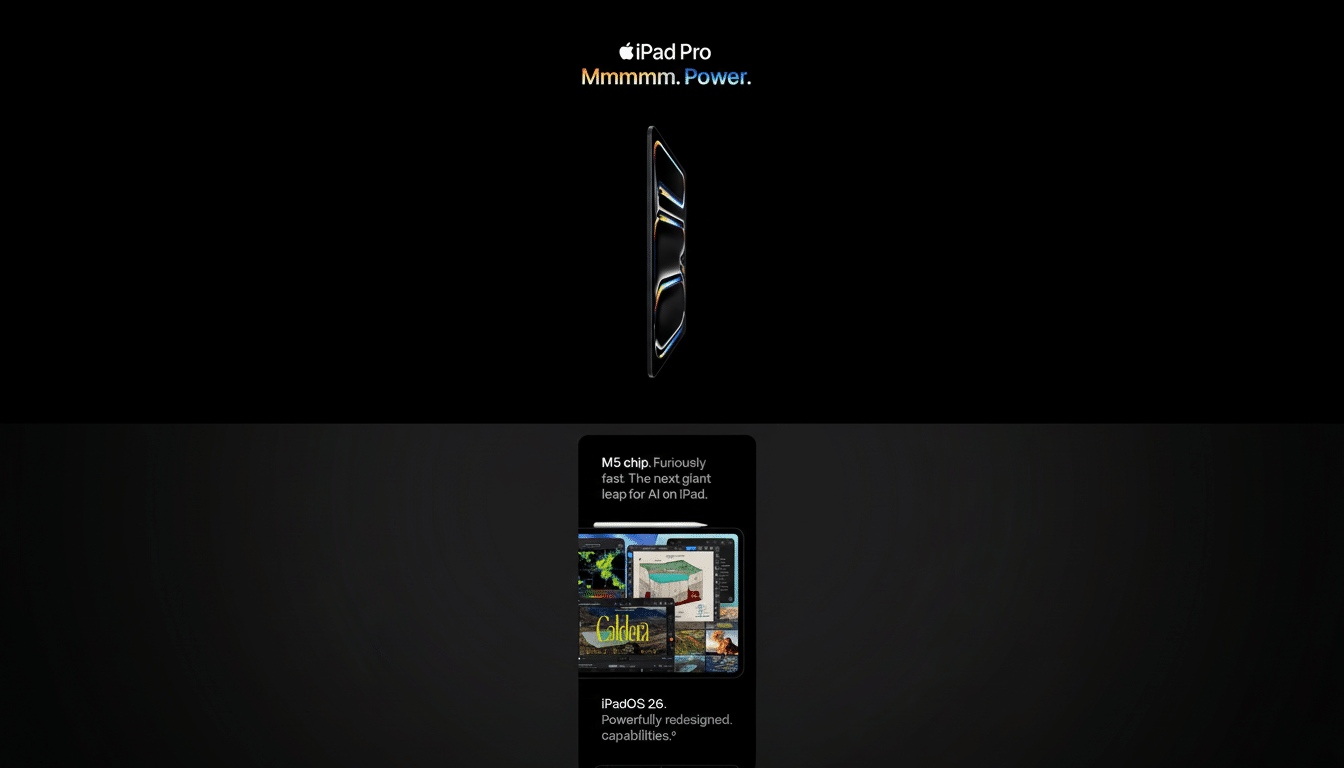Apple’s new iPad Pro is almost indistinguishable from the last one, but at this level of performance that no longer really matters. A new Apple‑designed M5 chip, faster memory and storage, and the company’s first in‑house wireless stack will mean a leap in AI performance, graphics, and connectivity. The question is whether those changes amount to a worthwhile upgrade over the already excellent M4 iPad Pro.
Performance and AI workflows on the M5 versus the M4
On paper, the M5 and M4 seem very similar: both have up to a 10‑core CPU, a 10‑core GPU, and a 16‑core Neural Engine design. But Apple claims that the silicon blocks themselves have been changed “in significant ways.” Per Apple’s own numbers, these should give you about 3.5x faster on‑device AI throughput with the M5, up to 1.5x faster ray‑traced graphics performance, and big gains in video transcode and AI photo processing speeds.
- Performance and AI workflows on the M5 versus the M4
- Connectivity and Apple’s new radios in the M5 iPad Pro
- Display, design, and accessories remain largely unchanged
- Battery life estimates and faster charging behavior on M5
- Cameras and media capture differences between M5 and M4
- Who should upgrade from an M4, M2, or M1 iPad Pro
- Bottom line: the iPad Pro M5 brings real gains for pros

The memory subsystem is the unsung star. Base storage tiers now include 12GB of unified memory (instead of only 8GB on competing M4 models), higher capacities are still outfitted with 16GB, and bandwidth increased from 120Gbps to the new max of 153Gbps. Apple is also promising faster internal storage, including read/write speeds that could double; in practice, those changes should cut waiting and watching time in apps like Final Cut Pro, DaVinci Resolve, Procreate, and LumaFusion, as well as let even larger on‑device diffusion models run without paging.
If you render out complex 3D scenes with ray tracing, batch‑export high‑bitrate footage rather than doing it overnight, or depend on device‑local AI (in the interests of privacy and/or latency), those boosts from an M5 will quite possibly be felt. We’re waiting for independent benchmarks such as Geekbench, 3DMark, and UL Procyon to provide specific numbers around Apple’s claims, but the architecture and memory updates alone suggest that we’ll be able to lean into multitasking a lot more and see less stutter under load.
Connectivity and Apple’s new radios in the M5 iPad Pro
The first tablet with Apple’s in‑house C1X cellular modem and N1 connectivity chip is the M5 iPad Pro. The N1 integrates Wi‑Fi, Bluetooth, and Thread to take the tablet even higher to Wi‑Fi 7 and Bluetooth 6.0. Features such as multi‑link operation on a Wi‑Fi 7 router can reduce latency and improve sustained throughput, useful for high‑density cloud asset pulls, AirDrop of large projects, or low‑latency Stage Manager sessions to external displays.
The C1X modem is designed to be more efficient and capable of higher peak speeds when combined with M5’s compute pipeline, and can support sub‑6GHz and C‑band 5G. No mmWave support, but in areas where C‑band is widespread you can expect snappier uploads for remote collaboration and distributing content. These are strategic course changes—in this case, Apple is now moving to own the full wireless stack, which typically means tighter power and performance tuning.
Display, design, and accessories remain largely unchanged
Nothing seems to change visually—and that’s good news, for the most part. The dual OLED Ultra Retina XDR panels remain, with ProMotion up to 120Hz, P3 color, 1,000 nits for SDR and 1,600‑nit HDR peaks. They both maintain the existing resolutions and 264ppi pixel density, alongside optional nano‑texture glass on 1TB and 2TB configurations to reduce glare even further.
The chassis, port configuration, and speaker array are the same, so your old Magic Keyboard and Apple Pencil gadgets will still work just fine. Pricing is the same as for M4, with a premium on cellular as always. For a lot of buyers, this stability means the upgrade calculus is largely about performance and connectivity, not design.

Battery life estimates and faster charging behavior on M5
Apple’s battery life estimate continues to be that familiar “up to 10 hours” of Wi‑Fi web browsing. The distinction this year is how fast you fill the tank. According to Apple, the M5 model can get up to 50% charged in around 35 minutes with a high‑wattage USB‑C charger. That speedier top‑up, along with the M5’s efficiency improvements for AI and graphics work, might be more important than headline battery life to creators who move from socket to socket as they work.
Cameras and media capture differences between M5 and M4
Camera hardware looks unchanged: 12 megapixels, with Smart HDR processing.
The rear has a landscape‑oriented lens for video calls—also 12 megapixels. The only difference between the Pro and Pro Max is that there are three on the back here, not two.
The wildcard here is the M5 image signal processor. If it matches what Apple does in its latest phone‑class ISP tech, you’ll see gentler upgrades to exposure, color, and noise handling—very nice‑to‑haves but not, on their own, any reason to move up from M4.
Who should upgrade from an M4, M2, or M1 iPad Pro
Already on an M4 iPad Pro? You should upgrade if you work with so much AI that it’s either GPU‑bound or has to be remotely served over a network. Imagine on‑device image creation, multi‑camera ProRes editing, and in a 3D scene with lots of content headroom to spare—or workflows that benefit from faster Wi‑Fi and better latency too. You’ll notice some time savings and better interactivity.
The M5 model is a much more significant upgrade across the board—display quality, GPU features (like ray tracing), AI acceleration, and wireless capability—if you’re on an M1 or M2 iPad Pro, so this latest tablet is likely to be a little more future‑proof for pro users.
Bottom line: the iPad Pro M5 brings real gains for pros
The iPad Pro M5 doesn’t upend the hardware you hold, but it significantly advances what you are able to do with it. The new chip and wireless stack make a real difference to creative pros, developers of all stripes, anyone who’s leaning into on‑device AI or high‑bandwidth workflows. Yep. If you’re working on a light load and your M4 is trucking along, you can take a pass on this one.

